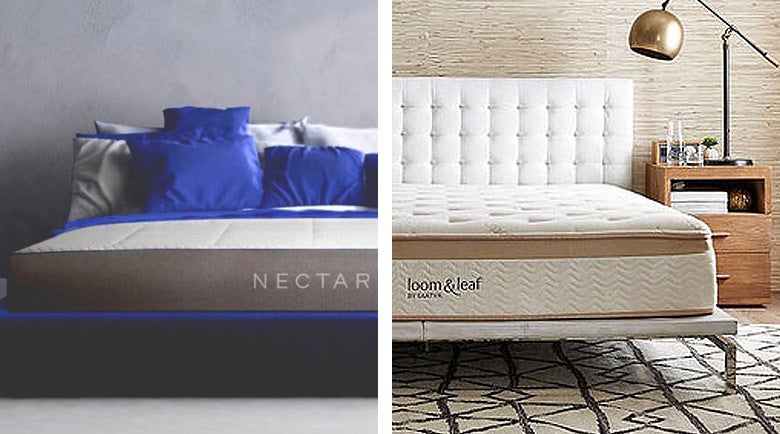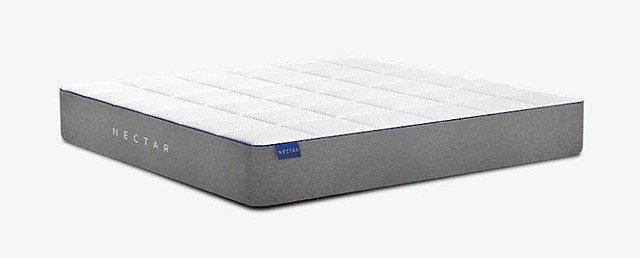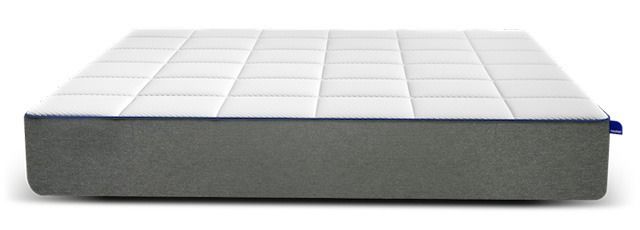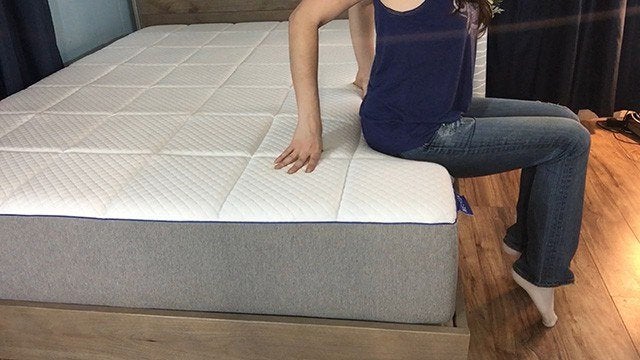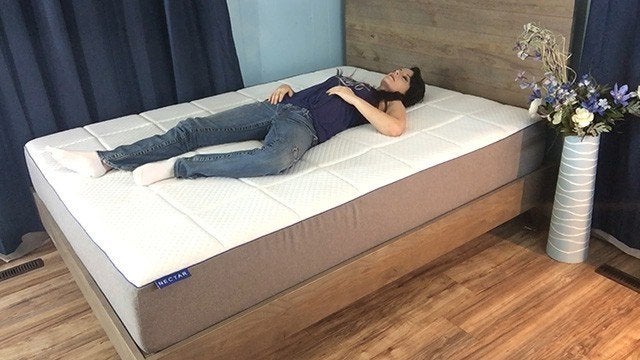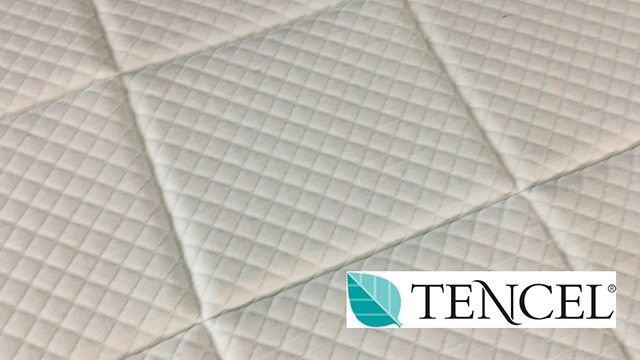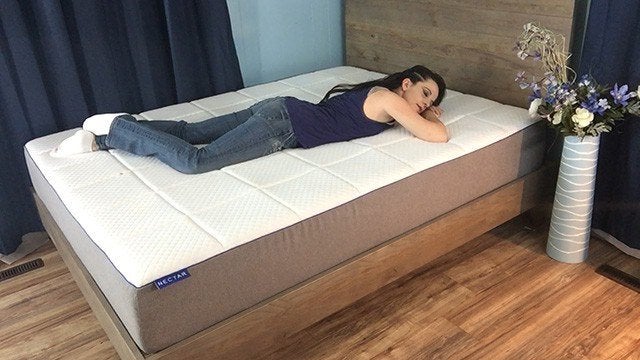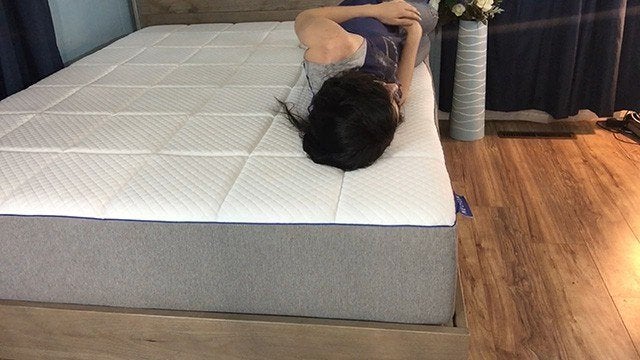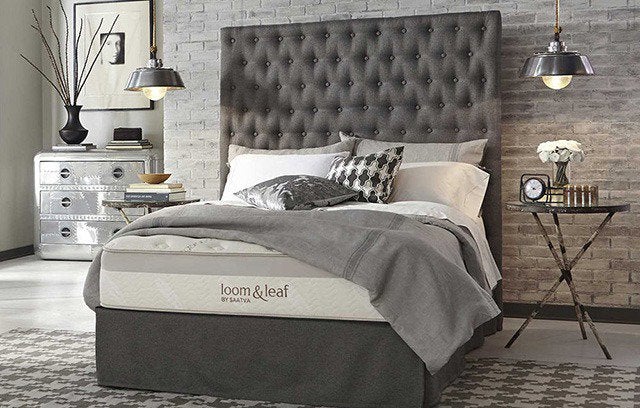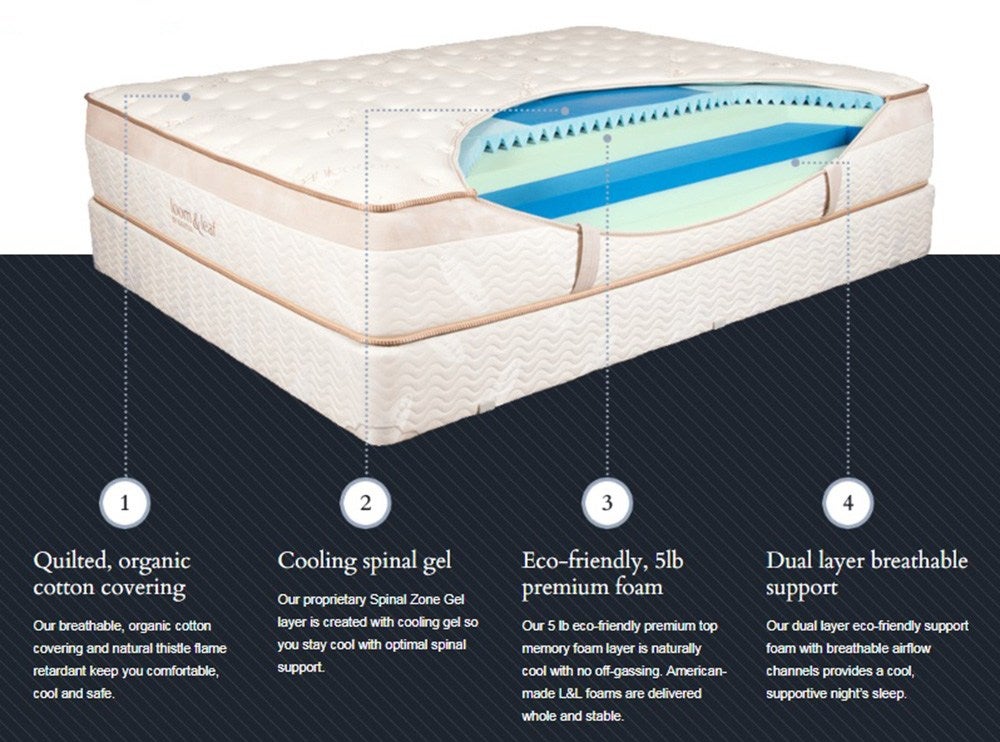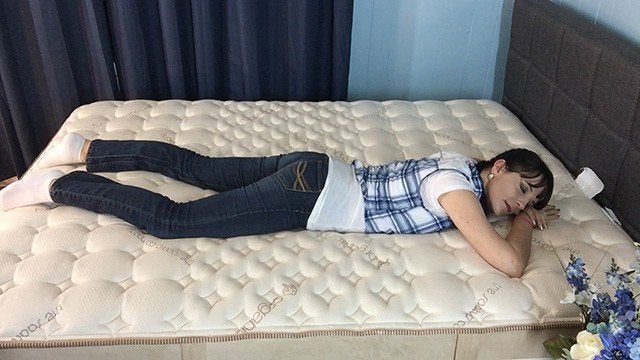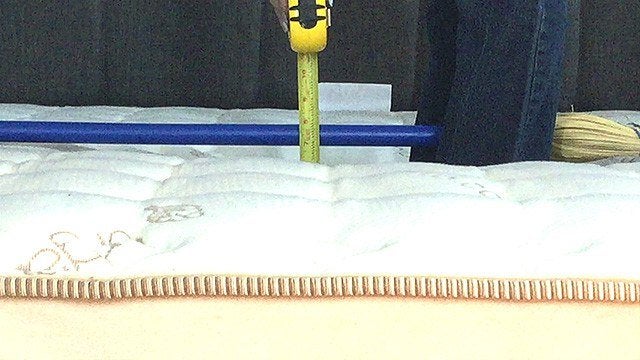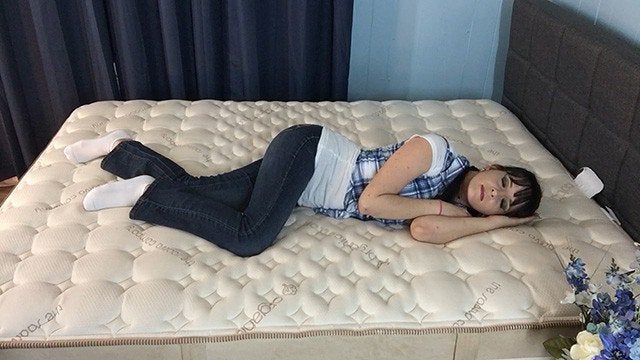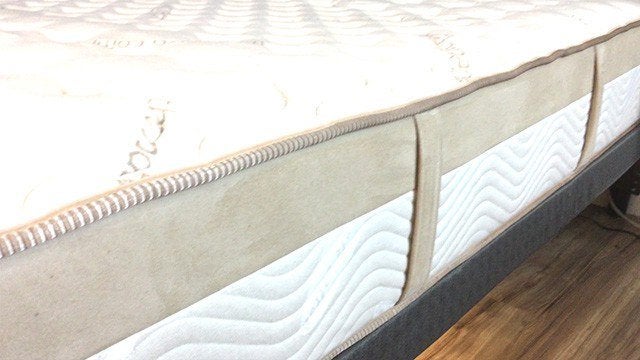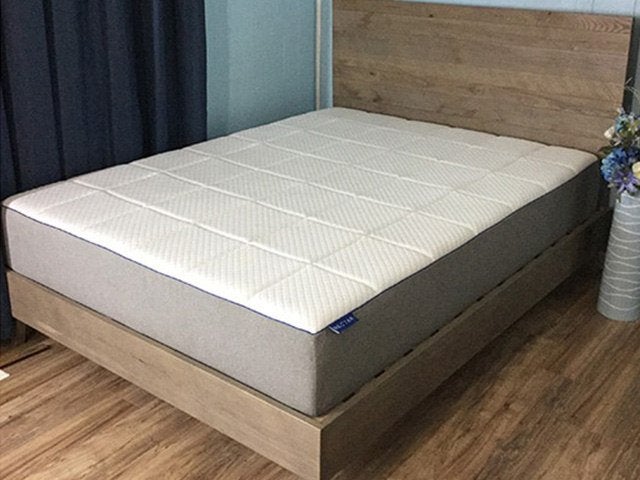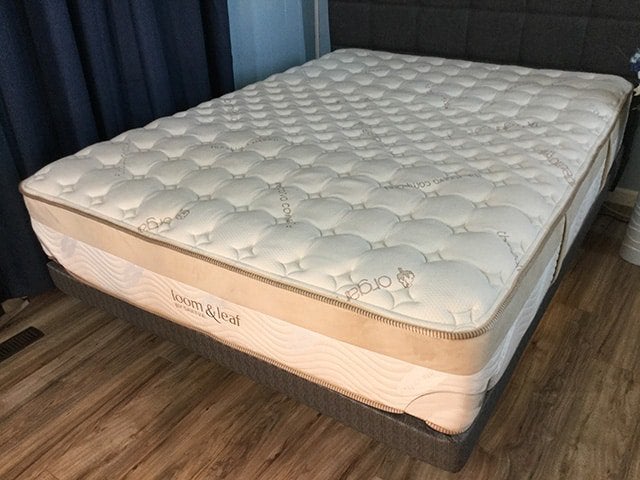Memory foam has become one of the most popular materials to be used in mattresses ever since its inventor saw an application for it in the bedding industry, after having originally developed it for NASA astronauts’ spacecraft seats!
The material is soft and pressure relieving, but most importantly, it has the inherent ability to adapt itself to the shape of your body, so that you sleep with virtually no stressed pressure points at all. However, it also has a major issue: it traps heat to the point that it can become a nuisance for many sleepers.
Today’s memory foam products incorporate a number of features to deal with this problem, and one of the most prominent ones is the use of gel infused memory foam. This Nectar vs Loom and Leaf comparison will cover two such products that are quite mattresses in today’s market, and help you decide for yourself which one is worth your money.
Nectar Breakdown
The Nectar sports a prototypical viscoelastic design comprising of several memory foam layers placed on top of a sturdy polyurethane foam base. It is wrapped in a Tencel fiber cover to promote breathability and moisture absorption on the surface.
— Construction
• Cover
As mentioned above, the cover is derived from Tencel – an organic fiber which is itself made from eucalyptus pulp. The organic origins of Tencel make the cover soft, moisture absorbent, breathable and inherently anti-bacterial – in fact, it surpasses even organic cotton in these regards (this is what the Loom and Leaf uses for its cover).
Another interesting thing is that this cover comes with a replacement guarantee (separate from the rest of the mattress). If it becomes damaged, the manufacturer promises to send a spare cover for free.
• First Layer
The Nectar’s topmost layer is made from a single inch of quilted gel viscoelastic foam. At a 14 ILD rating, this layer is extremely soft and conforming, and is thus able to mold itself to your exact sleep posture. Thanks to the incorporation of gel, the memory foam is able to dissipate heat from its surface with considerably greater effectiveness than it would without.
• Second Layer
The second layer is made from 15 ILD gel memory foam, and at a thickness of 3 inches. This increase in firmness and depth means that this layer is a bit slower in its conforming response that the upper most layer which is just fine: the slow down helps to stopper the impact of your body so that it doesn’t continue sinking all the way through.
The gel foam which the Nectar uses is of a high-end variety – in fact, it is normally found in medical grade bedding products, so you can expect it to be quite effective.
• Third Layer
This is the intermediate layer of the mattress, whose job it is to ensure an even transition from the soft, pressure relieving upper layers to the firm, supportive base. It is made from a stiffer (45 ILD) variety of viscoelastic foam, which significantly reduces the sinkage in this part of the mattress without making the response completely unyielding (that’s the next layer’s job, after all).
• Fourth Layer
5.5” of extremely hard 55 ILD polyfoam form the base layer of the Nectar. This layer stops your body from sinking any further, and sustains its weight for the entire night while you sleep. By preventing sinkage beyond its surface, the layer ensures that your joints and muscles are in proper alignment, which minimizes the stress they would experience otherwise, so you can wake up pain-free in the morning.
— Firmness and Feel
There is just one firmness level available for the Nectar, with the idea that it can address the needs of all sleepers to a respectable degree.
• Comfort and Support
The Nectar comes in a medium-firm firmness level, which combines the viscoelastic nature of the upper layers with a rapidly hardening core – in other words, yielding a balanced mixture of pressure relief and support. It is worth noting that while being highly adaptive, this mattress does feel a bit more firm than other memory foam mattresses with a medium-firm designation.
This can be attributed to the extra hardness of the base and intermediate layers, which provides pushback for your body that is usually absent from viscoelastic foam mattresses due to the soft, yielding nature of the material. The two base layers also mean that the Nectar is better equipped than its immediate competitors for handling bulky sleepers who end up sinking through the soft upper layers in most cases.
• Edge Support
Whereas most memory foam mattresses give way when pressurized anywhere on the surface (including the sides), the Nectar is able to fare better in this department thanks to the resistivity introduced by its two lower layers. It isn’t as solid an edge as a reinforced innerspring mattress (like the Saatva) would yield, but it is nevertheless formidable for an innerspring product.
• Cooling
The gel present in the two upper memory foam layers and the air channels that have been added in the base layer combine with the natural breathability of the Tencel® cover to yield a decidedly cooler sleeping experience than is the norm for viscoelastic products. That said, since there is still quite extensive use of viscoelastic in the Nectar’s construction, the heating problem isn’t eliminated completely, and temperature sensitive sleepers may notice this on especially hot nights.
• Motion Transfer
Just as you would expect from a viscoelastic foam mattress, the Nectar is effective at restricting movement impacts from spreading across the bed – the foam absorbs all the force locally, so that there is virtually no bounce-back that could disturb your sleep.
— Unique Features
• Affordable Pricing
The Nectar is priced at about $800, which is considerably less than the market average for online sold mattresses (roughly $1000), while packing a ton of value nonetheless: an organic based cover, adequate cooling for a memory foam mattress, and extremely generous warranty and return policy. In other words, it is a superb budget purchase, both in general and when compared singularly to the Loom and Leaf.
• Tencel® cover
The Tencel based cover of the Nectar, while not as traditionally luxurious as the Loom and Leaf’s organic cotton cover, is still praiseworthy in its own right: it is more breathable than natural cotton, comparably moisture absorbent (and thus anti-bacterial too), and just like cotton, it too has natural origins. In other words, it is a similarly safe sleeping surface, with the added benefit of extra breathability.
• Typical viscoelastic pressure relief with reduced sinkage
Most memory foam products (including the Loom and Leaf) suffer from the issue that because of their plush and contouring nature, they also tend to sink excessively under your bodyweight overnight and overtime. The Nectar also incorporates the same response as any other competitor, except that it places an intermediate layer of tough, thick viscoelastic that stoppers the excessive sinkage somewhat.
It certainly outshines the Loom and Leaf in this regard.
• Superior edge support
The Nectar, despite being a memory foam mattress, yields stronger edge support because of its stiff intermediate layer that I’ve already discussed above. The Loom and Leaf, on the other hand, doesn’t have substantial edge support because it uses only soft, conforming viscoelastic layers.
• 365-day trial
Despite being significantly more expensive, the Loom and Leaf come with a 120 day trial. On the other hand, the Nectar packs a vastly generous yearlong trial that translates into ample time to test the mattress out. In particular, you’ll be able to tell if it works for you in every season or not – this is far more generous than is the norm for the industry, and especially impressive considering the lower cost of the mattress.
• Lifetime warranty
Again, impressive for its price, the Nectar comes with a lifelong warranty. Ordinarily, I don’t consider warranties longer than 10 years to be significant because most mattresses don’t remain in warrantable condition beyond this period after prolonged use, but in this case, it takes some confidence to commit to the durability of your product for a lifetime. In comparison, the Loom and Leaf comes with a limited 15 year warranty despite being more expensive.
Loom and Leaf Breakdown
The Loom and Leaf can be viewed as a reincarnation of the typical memory foam mattress, with meaningful improvements to reduce the heating problems that usually plague the material.
Buy Loom and Leaf
— Construction
• Cover
The mattress’s cover is comprised of pure organic cotton – a material that has traditionally been associated with simplistic luxury because of its natural softness and breathability. While pure cotton does suffer from wrinkling and bunching, these problems have been minimized in the case of the Loom and Leaf by stretching the cover tautly over the constituent foam layers.
• First Layer
Gel-swirl viscoelastic foam at a density of 4 lbs./cu.ft. and a thickness of 2” make up the primary comfort layer of the mattress. This layer produces plush, adaptive pressure relief – the hallmark of any memory foam mattress, so that you can enjoy a surface that is precisely in line with the contours of your body.
The gel particles that are embedded into the foam itself ensure that this layer can remove a significantly greater amount of heat from the surface than normal viscoelastic foam can. A special panel of gel also targets your lower spine, since this part of your body is known to accumulate a large amount of heat.
Furthermore, this layer has been given a convoluted construction to allow for the passage of air, so that all the heat absorbed by the gel is dissipated into the environment in a timely manner.
• Second Layer
This layer is comprised of 2.5 inches of 5 lbs./cu.ft. memory foam, so that it has greater viscous drag than the upper layer. In simple terms, this translates into greater resistance to your body weight without sacrificing a large amount of contouring. Thus, this layer is intended to slow down the sinkage that your body will introduce on the mattress.
• Third Layer
The next layer is made from 2 inches of transition foam, which is put in place to create a uniform transition between the plush comfort layers and the stiff base layer. It stoppers the impact of your body considerably, and in the case of bulky sleepers, prevents them from feeling the tough surface of the base layer if their bodies manage to push through the soft upper layers of the mattress.
• Fourth Layer
The last layer forms the support core of the mattress and is appropriately made of HD polyfoam at a depth of 5.5 inches. It prevents any further sinkage of your body through the mattress and holds it in correct alignment as you sleep, so that the spine is not stressed at an awkward angle (which can lead to pain in the morning). This layer has breathable air channels to promote ventilation further.
— Firmness and Feel
There are two firmness levels available for the Loom and leaf mattress, which gives it an edge over the Nectar in terms of market coverage:
• Comfort and Support
- This level is equivalent to ‘Medium-Firm’ in most mattresses (including the Nectar). It is the Loom and Leaf’s most widely purchased variant since it is able to address the needs of the vast majority of consumers looking for a memory foam mattress. It achieves this by evenly balancing the plush, cushioning behavior of the upper layers, and the stiff, supportive response of the base. While the manufacturer does not disclose the ILD of this variant to prevent the competition from creating an imitation, they do give it a rating between 5 and 7 on their own relative scale of 1 to 10. 1 is the softest on this scale, and 10 is the hardest.
- This variant addresses the needs of a niche consumer segment that wants a memory foam mattress that is less ‘hugging’ and ‘sinking’ than the norm. Thus, it downplays the viscoelasticity of the upper layers, and instead brings out the stiffness of the base and intermediate layers to achieve this.This variant has an approximate rating of 8 on the manufacturer’s firmness scale.
• Edge Support
The Loom and Leaf, being a typical memory foam mattress, does not fare well in this department: the viscoelastic response means that the mattress sinks under your weight the moment you sit on it, and this is all the more pronounced at the edges. The transition layer does offer some resistance, but it is too little, too late.
The Nectar’s adaptive hi-core foam layer, on the other hand, is a bit sturdier by comparison.
• Cooling
There are several heat dissipation features present in the Loom and Leaf that I’ve already described above – these combine together to yield remarkable cooling – indeed, it is better even than some non-viscoelastic options in the market! Of course, the heating problem isn’t completely eliminated (memory foam is inherently heat retentive after all), however, it does decidedly better compared to the Nectar.
• Motion Transfer
Just as it is for any other memory foam product, the Loom and Leaf shines when it comes to blocking out sudden impacts and preventing them from transmitting into the surroundings. The material’s dead response takes care of this, ensuring that you and your partner can sleep without being disturbed by each other’s movements during the night.
— Unique Features
• Typical memory foam response without the heating issues:
As mentioned above, the Loom and Leaf is constructed to be a prototypical memory foam product – as such, it is extremely plush and contouring, with minimal resistance to your body weight. If you’re looking for this type of behavior in your bed, you may want to choose it over the Nectar, since the Nectar has some resistance because of its adaptive hi-core foam layer.
• Organic cotton cover:
The Loom and Leaf’s organic cotton is in line with its approach of sticking with tradition but keeping things cool: the material is simple and soft – which conveys a lavish feel in itself, but more importantly, it is also quite breathable, so it assists the transport of heat away from your body.
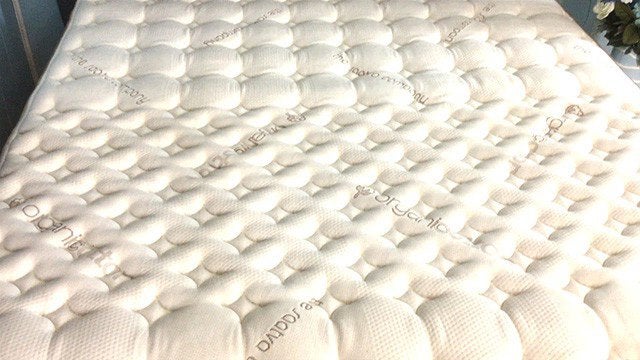
• Multiple firmness options
The Loom and Leaf comes in dual firmness options – the Relaxed Firm variant is comparable to the Nectar’s singular Medium-Firm offering, so that doesn’t count. However, it is the Firm variant of the Loom and Leaf which gives it the competitive advantage by making it viable for bulkier individuals and others who cannot deal with the stickiness of memory foam and seek a stiffer variant that still has some contouring capability.
Which One To Get?
— Nectar
You’re on a budget: The Nectar is lower priced than the Loom and Leaf, yet it still uses high quality foam, is durably constructed, and has a longer warranty and trial period. In short, if you’re on a budget that doesn’t let you get the Loom and Leaf (which is quite affordable in its own right), you won’t go wrong with the Nectar in terms of comfort, support and reliability.
Similarly, if you’ve never used a memory foam mattress before and want to give it a try without risking a big investment, again, the Nectar is the safer option because of its lower cost.
You’re looking for a slightly resistive viscoelastic experience: As I’ve mentioned above, the Adaptive Hi-Core foam layer of the Nectar adds some resistivity to the plushness of the overall response, which noticeably reduces the sinkage you experience from a typical viscoelastic product.
If you’re a heavy weight individual who constantly finds themselves sinking through ordinary memory foam mattresses, or you simply dislike the ‘enveloping’ feel, you may want to consider the Nectar over the Loom and Leaf. For the same reasons, the Nectar is also the better option if you’re going to be sitting on the edge of your bed for extended periods of time.
You sweat a lot: The Nectar’s Tencel cover is more breathable and moisture absorbent that the Loom and Leaf’s organic cotton cover. If you’ve got a condition that causes you to sweat profusely, you may benefit from the added breathability afforded by the Nectar’s cover.
However, you should also bear in mind that the Loom and Leaf is overall cooler than the Nectar, so if your sweating is a result of hot weather, you may also consider the alternative.
A longer warranty is important for you: The lifetime warranty that accompanies the Nectar can be interpreted as a loose indicator of durability – the manufacturer has to be confident about their product to give such a policy. If you derive confidence from a longer warranty, than the Nectar is the better choice hands down.
You’re not certain whether a new mattress is what you need: If you’re not sure about getting a new mattress (or a new memory foam mattress, in particular), you’re going to need as much time as possible to try out your purchase and make up your mind. The Nectar’s generous 365-day trial period makes it perfect if you’re in an indecisive situation like this.
— Loom and Leaf
Buy Loom and Leaf
You want a typical viscoelastic response: As mentioned above, the Loom and Leaf is constructed to be a prototypical memory foam product – as such, it is extremely plush and contouring, with minimal resistance to your body weight. If you’re looking for this type of behavior in your bed, you may want to choose it over the Nectar, since the Nectar has some resistance because of its adaptive hi-core foam layer.
You live in a hot climate: Thanks to the excellent cooling mechanism in place in the Loom and Leaf, it is one memory foam mattress that won’t cause you discomfort in hot weather. It is thus recommended for temperature sensitive sleepers whose sleep can get interrupted by just a few degrees rise in bed temperature.
You want a stiff yet contouring mattress: The Loom and Leaf comes in a Firm variant which yields more stiffness and places less emphasis on the plush reaction of memory foam. This variant is great for individuals who are uncomfortable with normal viscoelastic foam products because of their excessive sinking, as well as bulkier individuals whose weights cannot be sustained by medium-firm viscoelastic mattresses.
You prefer an organic cotton cover: If you’re a traditionalist looking for a luxurious bed, it doesn’t get much better than a sleeping surface made from organic cotton. The Nectar’s Tencel® cover may have benefits of its own, but organic cotton has always been considered a luxury bedding material, and I’m sure that there are many who would prefer it because of this historical association.
Read our full review here.
Nectar vs Loom and Leaf Comparison
| Nectar | Loom and Leaf | |
|---|---|---|
| Layers Used |
|
|
| Height | 11 inches | 12 inches |
| Firmness | Medium-Firm | Medium-Firm, Firm |
| Motion Transfer | Minimal | Minimal |
| Breathability | Slightly below average | Above average |
| Trial Period | 365-day | 120-day |
| Warranty | Lifetime | 15-year |
| Pricing (Queen) | $850 | $1,499 |
| Shipping | Free | Free across the US |
Conclusion
I hope you found this comparison between two modern viscoelastic mattresses helpful and education – please leave any feedback or queries that you have in the comments section. Also, if you know someone who is looking to buy a new memory foam mattress, do remember to share this post with them.
